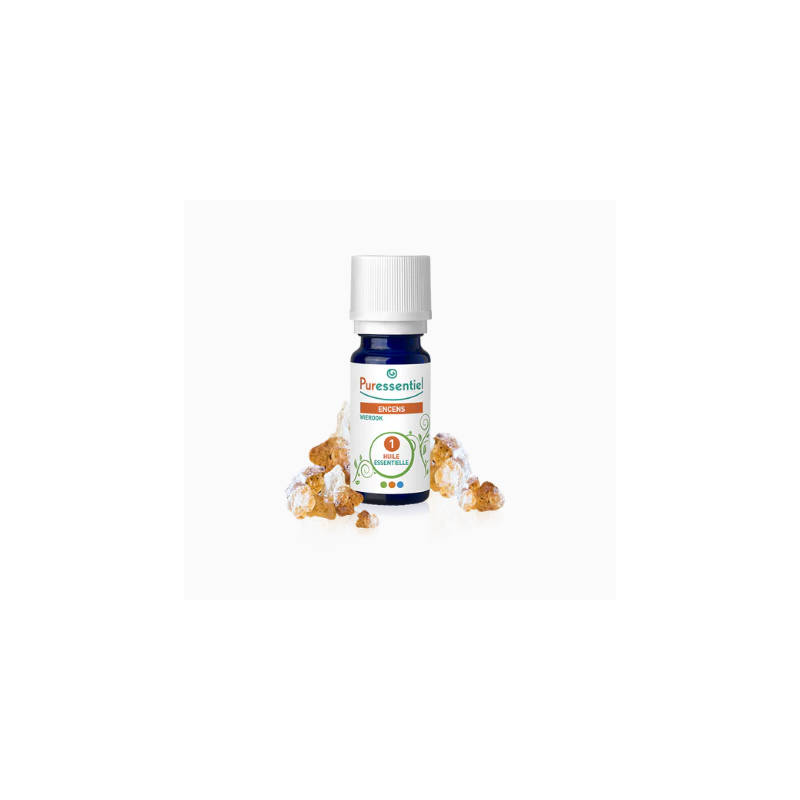Frankincense essential oil has an exceptionally powerful and recognizable scent. Native to the Arabian Peninsula (southern Yemen and Sultanate of Oman) and the Horn of Africa, olibanum is a highly prized oleoresin. Its harvest is carried out according to a thousand-year-old process: the bark is incised by removing a strip about ten centimeters in length. The resin is collected, once hardened in contact with air, 3 weeks later.
Indications
Skin infections with increase of stress, distress, irritated skin or state of anxiety Anti-bacterial, healing, anti-depressant.
Botany information
Boswellia sacra Botanical family: Burseraceae Productive organ: resin (drop) Chemotype: alpha pinene
Botany specifications
The incense tree is a small tree between 5-8 metres high with leathery leaves. It is found in dry regions in North-East Africa. Used over millenniums, the Egyptians used it for embalming.
Properties
It fights infections of the respiratory system because it is expectorant and antiseptic, balances immune defenses and calms anxiety, rheumatism and migraines. It is also astringent and healing. It is used in anti-wrinkle care and for dry skin. It is also an essential oil conducive to meditation.
Use
Diffusion +++, Bath +++, Massage +++, Orally -
How to use
Massage- Stress, Anxiety: 3-5 drops of incense EO in 5ml of sweet almond vegetable oil. Massage gently onto the plexus solaire.
Bath- Irritated skin or state of anxiety: 10 drops of incense EO + 10 drops of Roman camomile EO in 4 cap-fulls or 20 pressures of a neutral base. Pour everything into a warm bath.
Orally- Depression (depressive syndrome): Adults: 1 drop of incense on a neutral tablet, morning, midday and evening 15 minutes before each meal for 3 months.
Precautions for use
Not recommended for pregnant or breast feeding women or children under 8 years of age.


 100% secure payment, Customer Satisfaction
100% secure payment, Customer Satisfaction
 Order shipped within 24 hours from Monday to Friday*
Order shipped within 24 hours from Monday to Friday*



